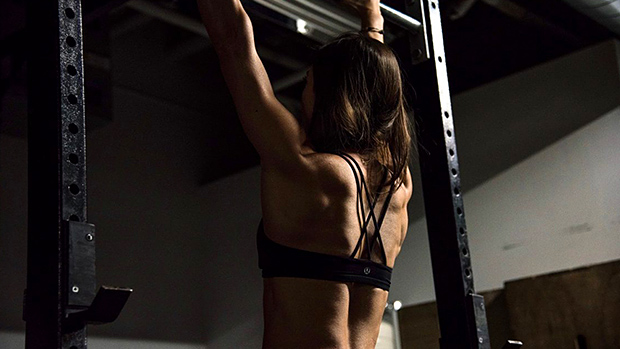Pullovers Work Damn Near Everything
Pullovers are one of the most underrated exercises. Besides improving stability and mobility in the shoulders (when performed properly), they also tax nearly every muscle in the upper body.
They're incredibly effective for working the entire core because you're essentially resisting extension forces on the spine as you move from shoulder flexion to extension. Done right, the movement pattern is very similar to an ab rollout or long-lever plank.
Unfortunately, most lifters do pullovers incorrectly, negating many of the benefits while simultaneously producing trauma to the joints and connective tissue.

- Not keeping the core tight and locking the spine in.
- Keeping an overly straight-arm position. There should be a focus on maintaining slight natural bend throughout.
- Allowing too much elbow bend and turning the movement into a triceps exercise.
- Failing to create a strong muscle mind connection with the lats and mindlessly going through the movement.
- Using excessive momentum.
- Overstretching in the overhead position and using excessive range of motion. Pullovers are often considered a semi high-risk exercise for those with shoulder issues. This is mainly because most lifters use too much range of motion and overstretch in the bottom position.
- Allowing the shoulders to over-elevate in the stretched position. Concentrate on keeping the shoulders moderately depressed and retracted, even in the stretched position. This is critical for avoiding excessive range of motion that can lead to joint stress and shoulder injuries.
Most lifters only know how to do the standard barbell or dumbbell pullover, but there are many variations. Here are some of the best that not only maximize strength and size gains, but also address the above issues with form:
1. Head-Off Pullover With Hollow Body Leg Raise

The "hollow body" position is characterized by a shortening of the anterior portion of the torso and posterior pelvic tilt, along with shortening the abs by pulling the navel closer to the sternum.
Doing a hollow body leg raise during pullovers further exaggerates the stress to the core and abs. It also helps to promote a more neutral spine during the eccentric phase of the movement, along with preventing hyper-mobility and over-stretching of the shoulder joint.
The "head off the bench" protocol eliminates cervical compression that typically occurs when the base of the head is pressed into another surface. Reducing these compressive forces and allowing cervical elongation to occur during pullovers not only improves neck strength and postural alignment, it also allows for optimal T-spine extension.
The head-off pullover is one of the most effective variations for instilling good postural mechanics. It promotes improved spinal alignment and proper shoulder positioning.
2. Decline Kettlebell Pullover
If you could only choose one type of loading method for pullovers, kettlebells would be the winner. The kettlebells provide a constant angle of pull because they hang behind and below the arms, which puts constant tension on the targeted muscles. Contrast that with pullover performed with free weights that provide tension predominantly in the fully stretched position with little tension throughout the other portions of the movement.
The decline position produces the largest range of motion of any pullover variation. It also provides more constant tension, similar to how a cable or machine would.
3. Alternating-Arm Eccentric Isometric Pullover
This is a great hypertrophy-inducing variation. The key is to hold the non-moving arm in the eccentric isometric position. This requires a high level of strength, motor control, stability, and full body activation.
Holding the stretch or eccentric isometric position while the opposite arm is moving creates significant microtrauma and muscle damage, which is important for growth. This isometric also involves constant tension, which is something that's difficult to replicate with free weight variations.
Add in the hollow body leg raise, as well as the head-off protocol for an extra boost in intensity. And yes, you'll need to summon every muscle fiber in your body to keep yourself from flipping off the bench.
4. Foam Roller Pullover
Besides promoting optimal spinal alignment and shoulder mechanics, the instability of the foam roller forces you to use strict form and eliminate momentum.
The foam roller has a tendency to move unless you remain tight and lock in your core. This creates significant rotational forces that you must resist to keep from falling off the roller. Any wiggling, cheating, asymmetrical movement, or shifting will cause you to lose balance. Pullovers are already known for their effectiveness in targeting the abs, but this variation takes the core activation up several notches.
5. Bottoms-Up Pullover
Most lifters allow their shoulders to over-elevate when performing the eccentric phase of the lift (when moving into the overhead shoulder flexion position) because they don't pack their shoulder joints. This also leads to excessive range of motion rather than a crisp and more compact position. The "bottoms-up" protocol helps to correct this because excessive range of motion will cause you to lose leverage and grip on the kettlebells.
6. Glute Bridge Pullover
Here's one of my NFL athletes, Jarius Wynn, performing the glute bridge pullover.
The decline pullover is one of the most effective variations. Unfortunately, when performed on a traditional decline bench, it minimizes one of the key benefits of pullovers: core and abdominal recruitment.
Although the core is still working during traditional decline pullovers, the intensity of activation is less than in other variations where the legs are free, mainly because the legs are simply hanging from the decline support pads.
7. Single-Arm Pullover
The single-arm pullover amplifies core activation to the extreme. There's an anti-rotation and rotary stability component that isn't present during the bilateral or isolateral versions.
Add in the leg raise hold as I have my NFL athlete Fernando Velasco doing in this video and you'll find this to be one of the most challenging core exercises there is. It's also an incredible movement for exposing and addressing imbalances throughout the kinetic chain.
8. Lying Cable Pullover
This variation produces constant tension similar to a variable resistance machine. It's also an excellent option for lifters who have excessive lordotic curvature throughout their spine. Even if that doesn't describe you, the exercise is a great core and upper body movement for thoroughly taxing the targeted musculature.
The key is to keep your core fully engaged throughout by trying to minimize the amount of arch produced in your lumbar spine and keeping the low back pushed into the floor, particularly in the contracted position.





